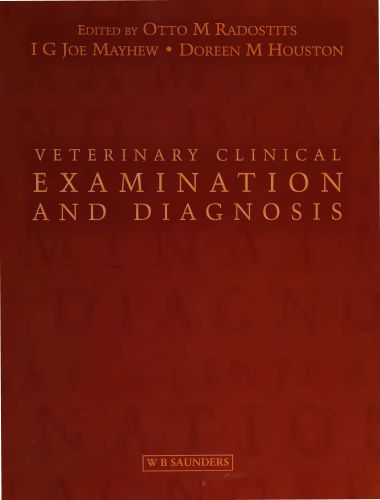Veterinary Clinical Examination and Diagnosis
by

This comprehensive text provides all of the information required to perform a thorough clinical examination of each organ system in common small and large animal species. Initial chapters on restraint, handling, and information gathering set the scene for sections on the particular skills necessary for examinations of different species, and detailed examinations of individual organ systems. Organ system chapters address additional tests available to practitioners to aid in diagnosis. Throughout this easily-accessible format, handy clinical boxes highlight key information. Tables and text boxes also place important information at your fingertips. Generously illustrated with line drawings, black and white photographs, and a color plate section, Veterinary Clinical Examination and Diagnosis provides all the tools needed to examine patients and reach a firm, confident diagnosis. Veterinary Clinical Examination and Diagnosis 2nd Edition
- useful for students and practicing veterinarians full of clear, informative text on all aspects of examination
- over 430 illustrations enhance the text and clearly demonstrate the techniques of examination handy clinical pointers give guidelines on key points
- written and edited by small and large animal experts worldwide – edited by cattle, equine and small animal experts large number of tables and text boxes summarise key information in an easy-to-read style
- Substantially revised and expanded chapter on toxins All chapters fully revised
- New quick review synopsis section for complex diseases in Section I of the book, so that key information is easy to find More didactic style of writing to make for quicker assimilation of key information.
This book it’s quite good, give the main information about clinical examination of farm and companion animals. The main problem of this book isn’t caw orienteered approach; in some parts of the text anatomical remind about horse, dog and cat are too superficial to allow the user to perform a good, deep, clinical examination. One example is the particular examination of the lungs area, the book say that in caw the lungs reach the 9th, on right, and the 11th, on left side, intercostal space; but for the other species it just limiting to say the generic pulmonary limits, for example in horse say that the caudal limit of lungs is the 15th intercostal space, that’s enough for the left side but not for the right side. So, a good book but you need to integrate it!
Direct Link For Paid Membership: –

